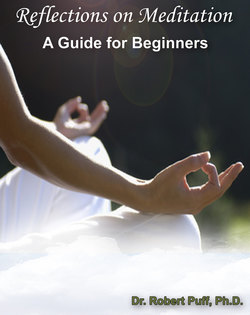Читать книгу Reflections on Meditation: A Guide for Beginners - Dr. Robert Ph.D. Puff PhD - Страница 4
На сайте Литреса книга снята с продажи.
2 How to Meditate
ОглавлениеThere are many ways to meditate. Because meditation has been around for so long, a wide variety of meditation systems are available.
The first technique I will introduce is simple and easy to use. It’s effective for both those who are new to meditation and those who have been meditating for years. This technique is popular all over the world. You will find it a very easy way to enter into meditation.
The key to meditation and why it works so well is that it literally changes the wave patterns in our brains. It’s based on a system of focus. All day long our minds are having thoughts and ideas. We are seldom attentive to one thought or idea at a time. We mentally bounce all over the place and rarely focus on one thing for very long. Some people refer to this mental jumping around as “monkey mind.” What meditation does is to quiet the mind, still it, so it doesn’t need to bounce all over the place.
What we do is create a rhythm, a pattern the mind can follow. When we do that, the brain waves start to slow down. We become more peaceful and relaxed.
In this first technique, we utilize a mantra that “follows the breath.” Most forms of meditation are based on following the breath. When we pay attention to the breath (“follow” it), both the mind and our breathing slow down. Some people find it hard to do this, though. Their mind bounces around so much that they forget to focus on their breathing. That’s why the first technique I will teach you adds something to the breath-observing technique. I call this first technique the “I am peaceful” meditation.
The “I am peaceful” meditation involves breathing in while mentally saying “I am,” then mentally saying “peaceful” as you breathe out. Your mind may wander, but you’ll find that if you direct your mind to go back to that phrase, you will begin to stay more focused on your breath. Do not strain or force your attention on the words or on your breathing. Just gently redirect your mind to the phrase and to your breathing any time you notice your attention has wandered off.
Begin the session with a few deep breaths. Then begin thinking the phrase, and just let yourself breathe normally. Don’t try to control the rate of your breathing, whether it’s deep or shallow. Let it be whatever the body wants it to be. The deeper you go in consciousness, the shallower the breath will typically become. Indian master yogis in advanced states of meditation have been found to stop breathing completely for extended periods of time, so don’t be concerned if it seems your breathing has almost stopped for a little while. This happens because the body is in such a deep state of rest and stillness that breathing, for a time, is hardly needed. Be assured: the body is perfectly capable of resuming deeper breathing whenever it so desires and will take breaths as it needs to. It’s all a very natural process, and you will feel rested and energized when you come out of it.
Now a word about coming out. It’s a good idea not to jump up quickly after meditation. This would be as jarring as jumping quickly out of bed after a very deep sleep. Take about three minutes to come back to a normal waking-state of consciousness. During this time, you can move around a little to let your body know it’s time to prepare for activity. Or, if you’re sleepy, you can just lie down and fall asleep.
As your mind slows down in meditation, you will begin to feel peaceful. If your mind wanders, don’t be critical of yourself; simply go back to your mantra: “I am peaceful.” With time, as you continue this practice, you will find it easier and easier to quiet the mind and to remain in the quietness. Even if your mind wanders, you will find that you still feel the effects of the meditation. It takes time and patience to meditate each day. With practice, it becomes increasingly easier to stay focused on your mantra and to follow your breath.
You will eventually find that you can enter the world of meditation quite easily. Find yourself a comfortable place to relax. Sit up and keep your spine straight (back support is fine if you need it). Don’t worry about fidgeting, but if you can stay still, it’s better. Meditation is about being present and relaxed. If you remain gentle with yourself and don’t become harsh when your mind does not stay focused, you’ll find that you progressively get better at easily and quickly falling into meditation.
